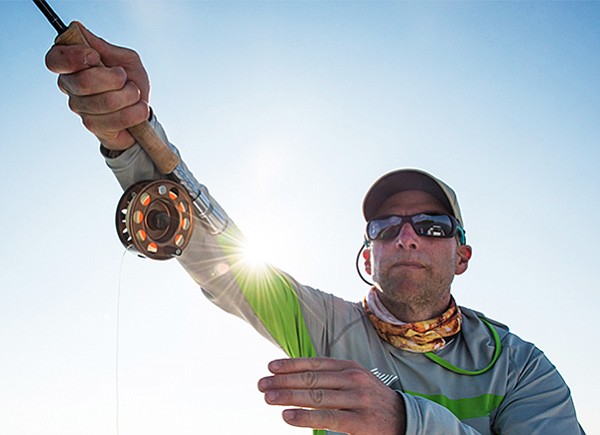COOLING FABRICS
Cooling Fabrics Are Becoming Really Cool
Companies involved in the development of fabrics that achieve a cooling effect are proliferating in the U.S. to meet demands by apparel makers and other manufacturers.
Some use unique construction to achieve cooling while others employ some kind of chemical additive. These products, most of which have been developed over the past few years, are advancing all along the supply chain, from fiber to chemical manufacturers to fabric developers.
Founded in 2014, Brrr is an Atlanta-based startup cooling-fabric company whose chemical-free technology is embedded into garments at the nanotech level.
Cofounder and Chief Executive Mary-Cathryn Kolb said Brrr’s technology is superior because it doesn’t involve chemicals. She is one of the inventors of the technology, which came about from research done at the University of Georgia, the University of Kentucky and the Massachusetts Institute of Technology.
Most cooling fabrics, she noted, are a lot of hype with the mechanics behind it being moisture wicking. Other ventures dip fabrics into chemicals, which are applied to the surface.
But Brrr’s technology has an all-natural mineral compound that acts as the cooling agent. “In suits or sheets or blankets, we feel we can do better and make them more comfortable and more pleasing in our everyday life,” Kolb said. “It’s part of the DNA of the fibers. They never wash out and never diminish.”
The company is currently producing fabric for men’s suits, women’s dresses, men’s dress shirts, undershirts, socks, underwear and bedding.
Brrr’s fabrics have achieved high ratings in tests conducted by the Hohenstein Institute in Germany, and the company was asked to be a charter member of Advanced Functional Fabrics of America, a nonprofit institute near the Massachusetts Institute of Technology and a member of the National Network of Manufacturing Innovation Institutes, which is trying to bring back manufacturing to the United States.
Also in the cooling-fabric business is Polartec, the longtime company known for its Delta product. Karen Beattie, the product manager who drove Delta’s development, said it is different because it helps provide real metabolic cooling for the life of the garment. She asserts that other technologies provide temporary or sensorial cooling or they can wash out over the life of a garment.
“It’s based on science, but it’s simple,” Beattie said. “Use fiber choice and fabric construction to amplify what our bodies do naturally to provide cooling. Evaporative cooling is the single biggest way our bodies dump excess heat when we sweat. We’ve constructed a fabric with hydrophilic yarns that hold just the right amount of sweat on your skin to experience prolonged evaporative cooling. The fabric also employs raised knit structures and highly breathable hydrophobic areas so you never get that clammy, sticky-shirt feeling.”
Delta products became commercially available for Spring 2017. Brands that have adopted it include Oiselle, Rhone, Outdoor Research and Fox Racing in the U.S. These are specialists in running, cycling and training garments.
In the fiber category, Israel-based Nilit is among the cool-category pioneers with its Breeze technology. The nylon 6,6 fiber came to the market about four years ago.
Molly Kremidas, marketing manager at Nilit North America, said the goal with Breeze is to achieve comfort through moisture management. She said it is consistent with trends of lighter fabrics.
“We do create our own polymer with an additive inside the polymer that we can’t disclose,” Kremidas explained. “We developed this. We went to a laboratory in Belgium [Centexbel Textile Research Center] for testing. There’s not really a true standard in the industry right now on how to measure cooling.”
Breeze yarns feature a flat cross-section structure with a wide surface that transfers body heat. Kremidas said initial tests showed that Breeze resulted in a temperature change on the surface of 1 degree centigrade.
That was enough to impress two performance-apparel brands. Fast-forwarding a few years, ExOfficio launched a line using Breeze in both tops and bottoms. It’s also used in Adidas’ Climachill products, in Puma shoes and in Playtex intimate apparel. Kremidas notes that it has applications in knits, warp knits and wovens.
Coolcore, a company headquartered in Portsmouth, N.H., has been around a little longer, having been launched in 2011.
It is different in that its cooling effects are achieved by the fiber and construction of the fabric rather than chemicals. Coolcore’s first products were cooling towels and ice wraps for medical uses, but it has gradually moved into an array of fabrics used in performance apparel.
Coolcore’s founder and Chief Technology Officer, Dennis Ackroyd, discovered that the fabric evaporated moisture, dried quickly and created a cooling effect, all chemical free. This technology eventually became the basis for Coolcore.
Coolcore has working arrangements with a couple of mills to produce fabrics to its specifications. Either Coolcore or the mills buy specific yarns, and the mills either knit or weave the fabrics.






















